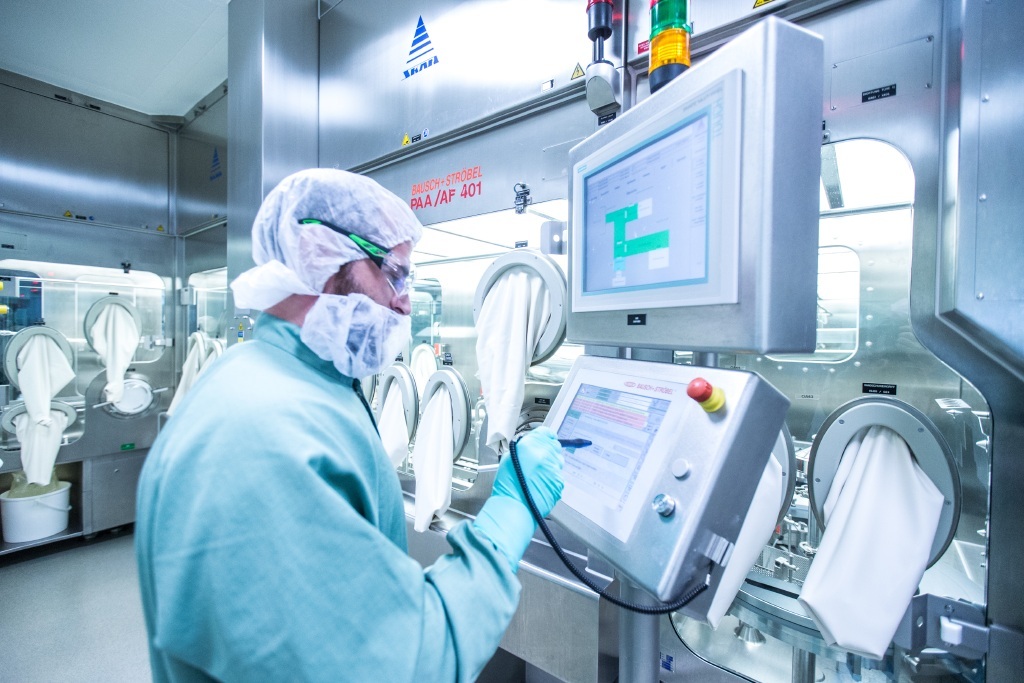Contract development and manufacturing organizations (CDMOs) provide outsourcing options to biotechnology and pharmaceutical companies, helping them advance their drugs from the laboratory to the clinic. Sounds simple. However, CDMOs are always evolving, which means assessments of the CDMO sector are complicated.
Recent developments in the CDMO sector include pandemic-driven demand fluctuations and supply chain disruptions, private equity–driven dealmaking and consolidation, and business model shifts. (These shifts reflect an interest in exploring new product categories, in offering end-to-end services, and in cultivating more lasting relationships with clients.) With all these developments, is it possible to venture any general statements about the CDMO sector?
One thing we can say is that the CDMO sector is poised for growth—at least according to market research firms. For example, in May, Grand View Research issued a report projecting that the global CDMO market will expand at a compound annual growth rate of 6.1% over eight years, from $135.85 billion last year to $232.59 billion by 2030.
The report also noted that in 2022, oncology drugs accounted for the largest share of CDMO activity, 35% ($47.684 billion). Moreover, according to Grand View Research, the oncology drug segment is expected to outgrow the overall CDMO industry with a CAGR of 7.4%–which would bring oncology CDMO activity by 2030 to $90.66 billion. This growth reflects the interest biopharmaceutical companies have in meeting rising demand for new oncology drugs as cancer becomes more prevalent worldwide.
Another thing we can say is that positive views on the CDMO market are not limited to market researchers. Such views are also available from recruitment firms in the life sciences industry. For example, Michael Selwood, a consultant at Mantell Associates, has observed that there is a trend toward greater demand for the services provided by CDMOs. He has suggested that this trend is being driven by six factors: growing complexity of drug development, cost containment and efficiency, focus on core competencies, increasing pipeline of biologics and personalized medicine, globalization and emerging markets, and COVID-19 pandemic impact.
Finally, we can say that CDMOs themselves see opportunities ahead. For example, the CDMO companies in this article are demonstrating their optimism through investments in new technologies and in new and expanded facilities, as well as through commitments to ambitious joint ventures.
These companies populate GEN’s first A-List of Contract Development and Manufacturing Organizations. It is, in fact, a “top 10” list, one in which the CDMOs are ranked by their 2022 revenues—as disclosed by the companies in regulatory filings or in responses to GEN queries.
Details about the top 10 CDMOs are provided in the list that accompanies this text. Besides naming a CDMO and citing its 2022 revenue, each item in the list indicates where the CDMO is headquartered. Finally, each item notes a few selected news developments.
1. Lonza Group
Basel, Switzerland
CHF 6.223 billion ($6.970 billion)
• Joined with Vertex Pharmaceuticals to announce plans for a 130,000-square-foot manufacturing facility in Portsmouth, NH, for Vertex’s type 1 diabetes cell therapies.
• Agreed to acquire Amsterdam-based Synaffix for €100 million ($107 million) in upfront cash and up to €60 million ($64 million) in milestone payments, in a deal intended to strengthen Lonza’s bioconjugates offering.
• Launched a partnership with ABL Bio focused on developing and manufacturing ABL’s new bispecific antibody for immuno-oncology and neurodegenerative diseases.
2. Thermo Fisher Scientific
Waltham, MA
$6.967 billion1
• Announced a next-generation platform of Dynabeads that is intended to accelerate cell therapy manufacturing.
• Opened a sterile fill-finish facility in Singapore.
3. Catalent
Somerset, NJ
FY 2023 Revenues: $4.276 billion2
• Avoided a proxy battle from Elliott Investment Management by agreeing to add four new independent directors supported by the activist investor.
• Announced that new executive chair John Greisch will head a new committee created to review Catalent’s business, strategy and operations, and capital-allocation priorities. (The agreement is intended to reverse a stock price plunge that sent Catalent’s stock skidding 48% from $92.28 to $47.81 the day Catalent and Elliott came to terms.)
4. WuXi Biologics
Wuxi, China
RMB 15.269 billion ($2.108 billion)
• Announced that it will spin off WuXi XDC Cayman, which originated as a joint venture with Wuxi STA to provide bioconjugate services.
• Announced plans to expand its capacity for drug substance and drug product in Germany, in part by doubling the capacity of its drug substance facility in Wuppertal from 12,000 L to 24,000 L.
5. Samsung Biologics
Incheon, South Korea
KRW 2.338 trillion ($1.773 billion)
• Announced full completion of its Bio Campus I, which offers a capacity of 604,000 L, and a planned expansion of Bio Campus II, which is designed to begin operations in 2025.
• Announced two manufacturing deals with Pfizer totaling $897 million to produce biosimilars with oncology, inflammation, and immunotherapy indications through 2029.
• Announced a $390.9 million drug production deal with Novartis, expanding on an $81 million contract signed last year.
6. Siegfried
Zofingen, Switzerland
CHF 1.23 billion ($1.377 billion)
• Acquired a 95% stake in DiNAMIQS, a Swiss CDMO focused on developing and manufacturing viral vectors. (Siegfried is upgrading DiNAMIQS’s capabilities to commercial scale by building a GMP-compliant facility set to start operations in 2025 with flexible capacities of up to 500 L.)
• Opened a Development Center for Drug Products in Barcelona, Spain.
• Broke ground on a CHF 25 million ($28 million) R&D Center for Drug Substances in Evionnaz, Switzerland.
7. Fujifilm Diosynth Biotechnologies
College Station, TX
Fujifilm Tokyo, Japan
¥ 194.2 billion ($1.314 billion)3

• Named Lars Petersen the new president and CEO. (Peterson was previously chief operating officer of the Fujifilm Diosynth site in Hillerød, Denmark, and head of its large-scale strategic business unit.)
• Created a new Strategic Business Unit (SBU) to offer services and manufacturing capacities tailored to support large- or small-scale biopharma clients.
8. Recipharm
Stockholm, Sweden
€1.227 billion ($1.314 billion)
• Announced that it will help Barcelona-based Ahead Therapeutics develop its lead pipeline candidate, a treatment for myasthenia gravis.
• Agreed to provide analytical and process development capabilities to support toxicology studies, as well as GLP manufacturing of lipid nanoparticles to encapsulate the active pharmaceutical ingredient, an antigen peptide.
• Opened a new analytical lab in Bengaluru, India, designed to enhance its global testing capabilities for nitrosamines, extractables and leachables, and elemental impurity testing.
• Arranta Bio subsidiary partnered with MIT to develop a continuous manufacturing technology for mRNA therapeutics.
9. Boehringer Ingelheim
Ingelheim, Germany
€1.024 billion ($1.097 billion)4
• Broke ground in May on a €285 million ($305 million) Chemical Innovation Plant at its headquarters. (Operations are set to begin in 2026. Manufacturing processes are to be developed for producing active pharmaceutical ingredients (APIs) and drugs for clinical trials.)
• Celebrated its new €350 million ($374.5 million), 34,500 square meter (371,355 square-foot) Biologicals Development Center in Biberach an der Riß, Germany, where 500-plus employees will research and develop antibodies and therapeutic proteins.
10. MilliporeSigma
Burlington, MA
Merck Darnstadt, Germany
€956 million ($1.024 million)5
• Announced a $25 million expansion of its Lenexa, KS, facility that will add 98,000 square feet of laboratory and production space for manufacturing cell culture media. Lenexa joins dry powder cell culture media manufacturing sites in Nantong, China, and Irvine, Scotland.
• Announced it is stepping up biosafety testing in two sites in Scotland (Glasgow and Stirling) through a €35 million ($37.5 million) expansion that is projected to create nearly 500 jobs.
References
1. Revenues reflect Life Science Services sector, which includes CDMO and contract testing services.
2. Revenue reflects figure for Biopharma Contract Manufacturing operations, furnished by the company as part of its annual reports.
3. Figure is the sum of Q1-Q4 fiscal year 2022 quarterly revenue figures for the “Bio CDMO” business within the Healthcare segment of Fujifilm Holdings Corp., whose subsidiaries include CDMO Fujifilm Diosynth Biotechnologies. Fujifilm operates on a fiscal year that runs from April 1 of the named fiscal year to March 31. FY 2022 covers the 12 months starting April 1, 2022, and ending March 31, 2023.
4. Catalent operates on a fiscal year that ends June 30. Figure reflects net revenues for the 12 months ending June 30, 2023.
5. Revenue figure reflects the approximately 30% share of revenues generated by the Pharma Services business of Thermo Fisher’s Laboratory Products and Biopharma Services segment, according to a pie chart presented at the company’s Investor Day presentation on May 24. Pharma Services includes Patheon, which Thermo Fisher acquired in 2017 for $7.2 billion.



